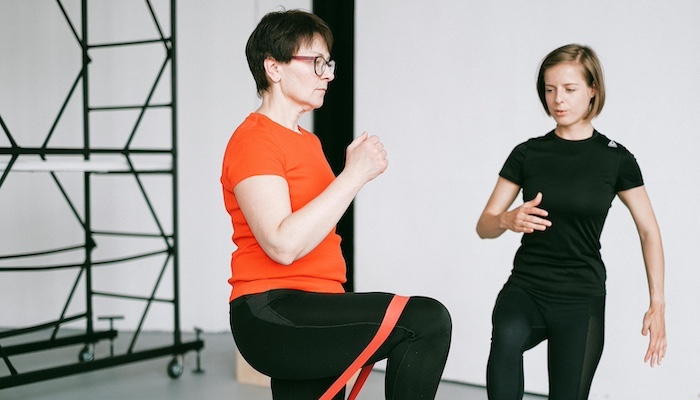
Physical therapists may use certain aids and techniques to supplement active treatment for sciatica. These treatment aids typically consist of specialized devices and equipment. While some of these aids are used at the therapist’s office, others may be used to relieve pain at home.
In treating sciatica, these aids may be used to promote blood flow, reduce muscle spasms, and decrease pain. Common methods are discussed below.
Heat and Cold Packs
Packs containing granules, beads, or gels that can be heated or frozen are useful in placing over sore and painful tissues. The benefits of using heat and cold packs are:
- Heat packs may relieve pain by reducing muscle stiffness. The heat from these packs helps dilate blood vessels, improve blood flow, and minimize muscle tension. Using a heat pack may help promote relaxation and prepare for a physical therapy appointment.
- Cold packs may relieve pain by causing a numbing effect. These packs typically constrict the blood vessels beneath the skin, helping to reduce pain and swelling. Cold packs also slow down the chemical reactions that cause inflammation and pain.
It is advisable to apply heat or cold therapy for 15 to 20 minutes and take a 2-hour break in between to optimize the tissue response before reapplication. It is advised to place a barrier, such as a towel between the body and the source of ice or heat to avoid skin injury.
Transcutaneous Electric Nerve Stimulation (TENS)
A TENS unit applies electric current directly to sensory nerves, creating a tingling sensation that may reduce the feeling of pain. When used in conjunction with physical therapy, a TENS unit may help reduce acute lower back pain. This reduction in pain may help improve a patient’s tolerance for active movements that facilitate healing.
A TENS unit consists of a device with electrodes that are taped to the skin near the pain sites. The device may be used in a therapist’s office or at home.
Neuromuscular Electric Muscle Stimulation
Neuromuscular electrical stimulation using different wavelengths and amplitudes is a therapeutic method of inducing muscle contraction. In certain cases, when nerve involvement is severe and a patient is unable to voluntarily contract muscles in their hip or leg, or muscle contraction is weak, electrical stimulation can help facilitate these contractions to improve function.
Electric muscle stimulators are available in different forms, including machines with electrodes that are taped to the body, or smaller devices that are placed directly on the body. A computer or hand-held remote helps to adjust the frequency and intensity of the electric current that is passed.
Traction
Mechanical traction gently pulls the vertebrae apart to relieve the compression of spinal tissues. In treating sciatica, traction of the lumbar spine can help:
- Temporarily widen spaces in the intervertebral foramina to relieve compression of the spinal nerves
- Provide muscle stretch to relieve spasm
- Relieve pressure on injured discs, reducing nerve symptoms
A therapist may apply traction manually or use mechanical traction, where the patient lies on a table and is secured using a harness or straps. The therapist usually determines the type and amount of force to be used. The tension may be increased gradually and is usually followed by a period of relaxation.
Physical therapy and supporting treatments are performed under the supervision of a certified physical therapist or another qualified health professional who typically formulates a treatment plan based on the individual’s condition. Exercises are generally performed at home and may be continued for a few weeks or months after the therapy sessions.
Precision Pain Care and Rehabilitation has two convenient locations in Richmond Hill – Queens, and New Hyde Park – Long Island. Call the Queens office at (718) 215-1888 or (516) 419-4480 for the Long Island office to arrange an appointment with our Interventional Pain Management Specialists, Dr. Jeffrey Chacko or Dr. Sonny Ahluwalia.















